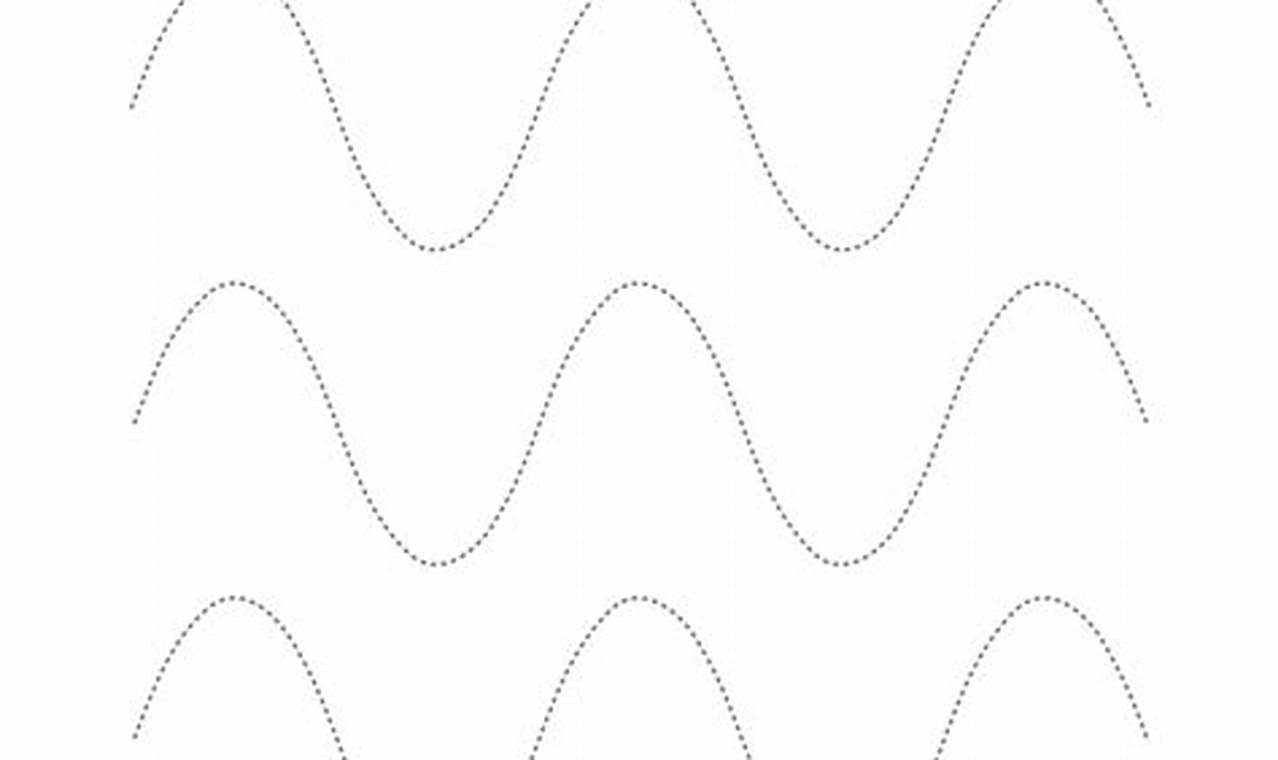Early childhood education emphasizes the development of fundamental skills that pave the way for academic success. Among these, fine motor skills play a crucial role in a child’s ability to write, draw, and perform various everyday tasks. Introducing structured activities that specifically target these skills is essential, and wavy line tracing activities for kindergarten serve as an engaging and effective method to achieve this goal.
The primary benefit of utilizing wavy line tracing activities for kindergarten lies in the enhancement of fine motor control and hand-eye coordination. Successfully navigating the curves and bends of wavy lines strengthens the small muscles in the hand and wrist, which are vital for developing a comfortable and legible handwriting style. Furthermore, these activities promote visual tracking skills, as children learn to follow the lines with their eyes, a skill crucial for reading and other visual tasks. The development of pre-writing skills, spatial awareness, and concentration are also enhanced.
This worksheet typically features a series of wavy lines, varying in amplitude and frequency, designed to challenge and engage young learners. Bold lines often serve as guides, making it easier for children to trace accurately. Fun, age-appropriate illustrations may accompany the lines to maintain interest and motivation. Ample space is provided for practice, allowing children to repeatedly trace each line until they gain confidence and control. The simplicity of the design ensures accessibility for all kindergarten-aged children, regardless of their current skill level.
To effectively use this worksheet, begin by ensuring the child has a comfortable grip on a crayon, pencil, or marker. Guide the child to start at the beginning of each wavy line and encourage slow, deliberate movements. It is helpful to break the task into smaller sections, focusing on one or two lines at a time. Positive reinforcement and encouragement are key; praise effort and progress rather than focusing solely on perfection. If a child struggles, demonstrate the correct tracing technique and offer gentle assistance.
To further support the development of fine motor skills, complement this worksheet with related resources available on Kidtraces.com. Explore other tracing activities that focus on different shapes and patterns. Encourage activities like drawing, coloring, and playing with building blocks to reinforce hand-eye coordination and dexterity. Books designed to improve letter recognition and early writing skills can also provide a valuable supplement to this activity.
In conclusion, wavy line tracing activities for kindergarten are a valuable tool for developing essential fine motor skills and preparing children for future academic success. By providing structured practice in a fun and engaging format, this worksheet empowers children to build confidence and master the fundamental skills necessary for handwriting and other important tasks. Download the worksheet today and explore more free resources on Kidtraces.com to support continuous learning and skill development.
